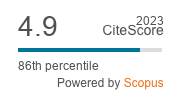Article | Open Access
It All Happens at Once: Understanding Electoral Behaviour in Second-Order Elections
| Views: | 5214 | | | Downloads: | 2897 |
Abstract: The second-order election (SOE) model as originally formulated by Reif and Schmitt (1980) suggests that, relative to the preceding first-order election result, turnout is lower in SOEs, government and big parties lose, and small and ideologically extreme parties win. These regularities are not static but dynamic and related to the first-order electoral cycle. These predictions of the SOE model have often been tested using aggregate data. The fact that they are based on individual-level hypotheses has received less attention. The main aim of this article is to restate the micro-level hypotheses for the SOE model and run a rigorous test for the 2004 and 2014 European elections. Using data from the European Election Studies voter surveys, our analysis reveals signs of sincere, but also strategic abstentions in European Parliament elections. Both strategic and sincere motivations are also leading to SOE defection. It all happens at once.
Keywords: electoral cycle; second-order elections; sincere voting; strategic voting; turnout; vote switching
Published:
Supplementary Files:
© Hermann Schmitt, Alberto Sanz, Daniela Braun, Eftichia Teperoglou. This is an open access article distributed under the terms of the Creative Commons Attribution 4.0 license (http://creativecommons.org/licenses/by/4.0), which permits any use, distribution, and reproduction of the work without further permission provided the original author(s) and source are credited.




